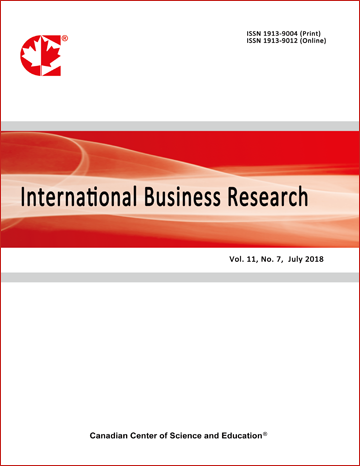The Lead-Lag Relationship among East Asian Economies: A Wavelet Analysis
- Buerhan Saiti
Abstract
Recently, the issue of market linkages (and price discovery) between stock indices and the lead-lag relationship is a topic of interest to financial economists, financial managers and analysts, especially that involves the East Asian countries. In this study, to investigate the financial market leader in East Asian countries after the US financial crisis, we employ several conventional time-series techniques and a newly introduced method – wavelet analysis - to economics and finance. Daily return data covering the period from 15th September 2008 to 1st March 2016 for five major international stock price indices in East Asia are analyzed. Our findings tend to, more or less, suggest that the Shanghai stock exchange composite index is the only exogenous variable, whereas the remaining variables are endogenous. Such finding implies that the Shanghai stock exchange composite index is the financial market leader whereas the rest of variables are follower, which includes Nikkei 225 (Japan). In order to check the robustness of our results, we also employed wavelet correlation and cross-correlation techniques. Interestingly, based on the results, the leading role of Shanghai Stock Exchange Composite Index is very clear at short scales; whereas, the leading role disappears at the long scales. This study shows that wavelet analysis can provide a valuable alternative to the existing conventional methodologies in identifying lead-lag (causality) relationship between financial/economic variables, since wavelets considered heterogeneous agents who making decisions over different time horizons.
- Full Text:
 PDF
PDF
- DOI:10.5539/ibr.v10n3p57
Journal Metrics
h-index (August 2025): 114
i10-index (August 2025): 1059
h5-index (August 2025): N/A
h5-median(August 2025): N/A
( The data was calculated based on Google Scholar Citations. Click Here to Learn More. )
Index
- ACNP
- ANVUR (Italian National Agency for the Evaluation of Universities and Research Institutes)
- CNKI Scholar
- CrossRef
- EconBiz
- EconPapers
- Elektronische Zeitschriftenbibliothek (EZB)
- EuroPub Database
- Excellence in Research for Australia (ERA)
- Genamics JournalSeek
- Google Scholar
- Harvard Library
- IDEAS
- Infotrieve
- Mendeley
- Open policy finder
- Qualis/CAPES
- RePEc
- ResearchGate
- ROAD
- Scilit
- Technische Informationsbibliothek (TIB)
- The Keepers Registry
- UCR Library
- UoS Library
- ZBW-German National Library of Economics
- Zeitschriften Daten Bank (ZDB)
Contact
- Kevin DuranEditorial Assistant
- ibr@ccsenet.org
